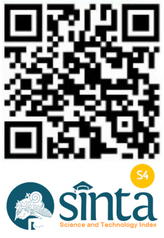Most read articles by the same author(s)
- Desita Anggraeni, Christian N. N. Handayani, Dirga Daniel, Agus Wahyudi, Tarlan Subarno, Zulfikar Afandy, Dyah R D Darmawan, Fikri Firmansyah, Estradivar, DETERMINING ZONES OF NINE MARINE PROTECTED AREA IN SULAWESI TENGGARA PROVINCE , Coastal and Ocean Journal (COJ): Vol. 1 No. 2 (2017): COJ (Coastal and Ocean Journal)
- Christian Novia N Handayani, Estradivar, Dirga Daniel, Oki Hadian, Khairil Fahmi Faisal, Dicky Sucipto, Puteri Maulida, IDENTIFICATION OF CONSERVATION PRIORITY LOCATION IN INDONESIA BASED ON LAND-SEA CONNECTIVITY , Coastal and Ocean Journal (COJ): Vol. 1 No. 2 (2017): COJ (Coastal and Ocean Journal)
- Estradivar, Christian Novia N Handayani, Dirga Daniel, adib Mustofa, MARINE PROTECTED AREA NETWORK DESIGN: CASE STUDY OF MALUKU PROVINCE , Coastal and Ocean Journal (COJ): Vol. 1 No. 2 (2017): COJ (Coastal and Ocean Journal)






